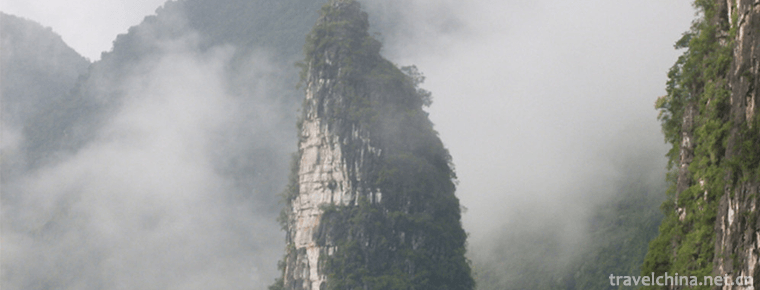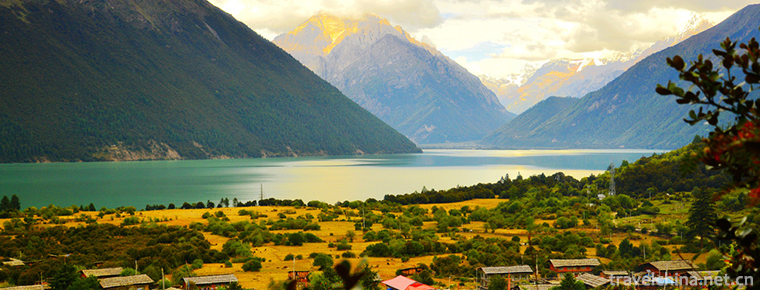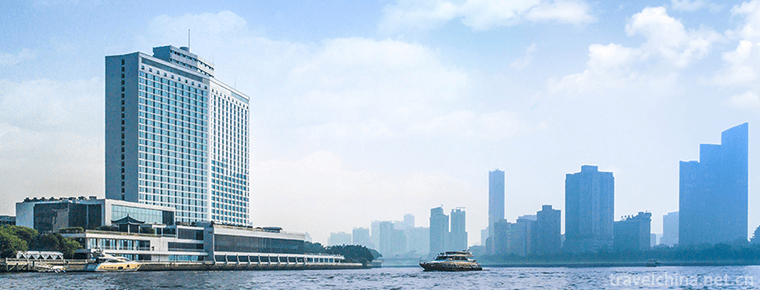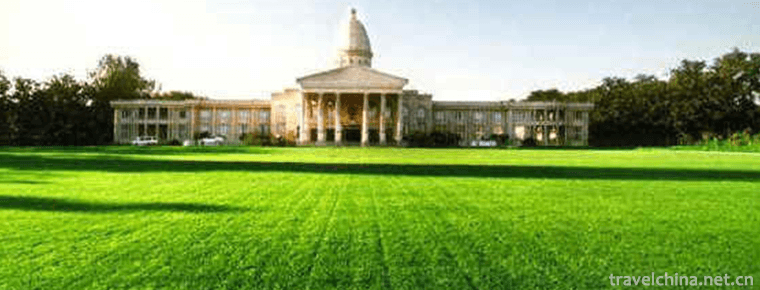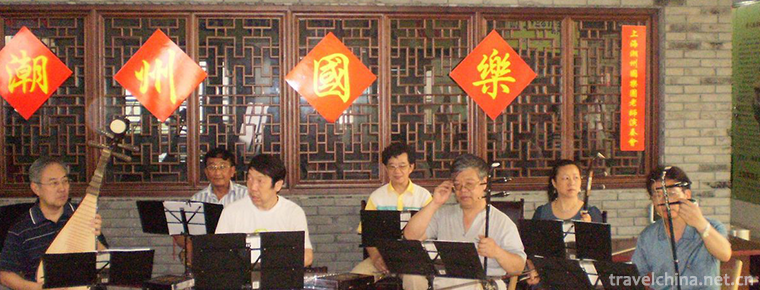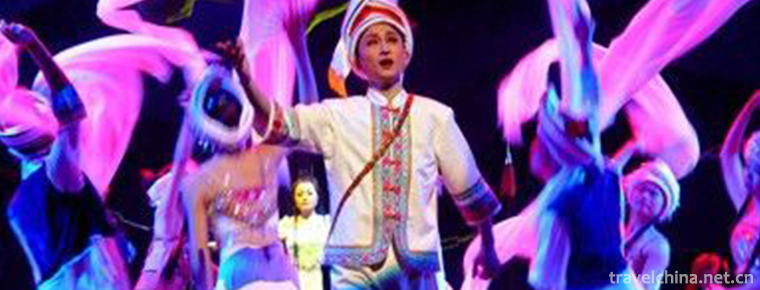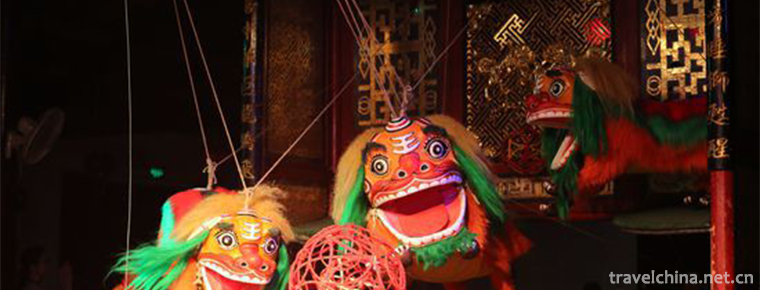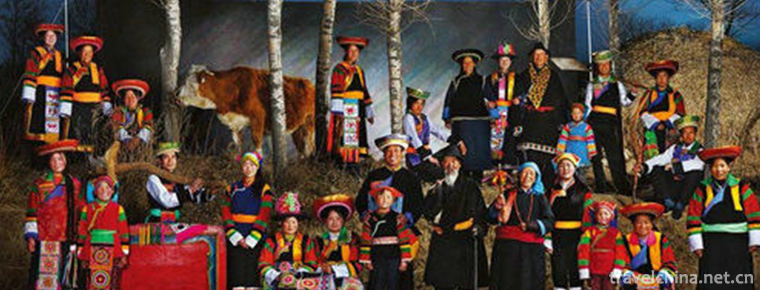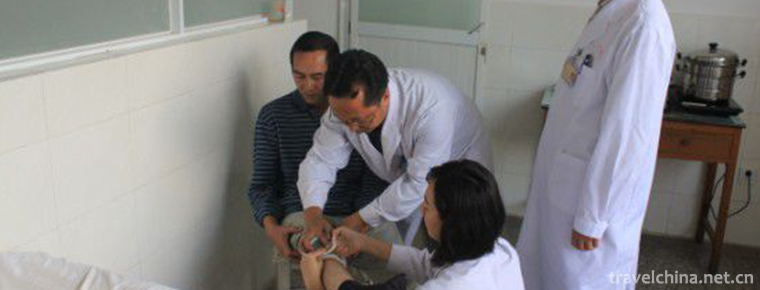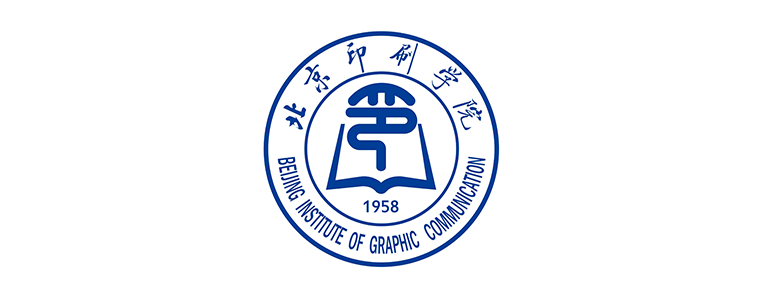Quzi Opera
Quzi Opera
Quzi Opera, the traditional drama of Dunhuang City, Baiyin City, Huating County and Xinjiang Production and Construction Corps in Gansu Province, is one of the national intangible cultural heritage.
Opera originated from traditional folk songs in Ming and Qing Dynasties. In the late Qing Dynasty and the early Republic of China, local operas with different styles were formed in various places, such as Dunhuang Opera, Huating Opera, Xinjiang Opera and Ningxia Opera. It has the style and characteristics of Yuan Zaju, and its aria belongs to the consonant body
On May 20, 2006, Opera (Dunhuang Opera, Huating Opera) was approved by the State Council to be listed in the first batch of national intangible cultural heritage, the heritage number: IV-69.
In 2008, the Meihu households declared by Huayin City of Shaanxi Province and Linyi County of Shanxi Province were selected into the second batch of national intangible cultural heritage list, the heritage number: IV-69.
historical origin
Historical Origin
Opera is a folk opera that is popular in Dachuandu Village, Baiyin Shuichuan Town, Gansu Province. It originates from the folk operas in the Yellow River Valley of China, Gansu, Qinghai and other places. It is based on The Story of the Western Chamber written by Wang Shifu in the Yuan Dynasty. It has the style characteristics of Yuan Zaju, and its singing style belongs to a combination of tunes.
In 1870, Zhang Hairun (Zixiaoxia), a well-studied scholar in Dachuandu, Baiyin, Gansu Province, studied the Western Chamber Story and other opera works in order to activate the culture of his hometown, enrich people's enjoyment, and draw lessons from it, boldly innovate, change customs, collect folk songs, collect ancient tunes, sing exorcise, make a good year, carefully study and compile operas according to historical records.( The original Western Chamber Minor) 27 folds, with nearly 30 tunes. Now we collect 12 folds of lyrics, including 8 folds of Xixiangdiao, which is divided into eight parts: visiting temples, borrowing chambers, rewarding rhyme, banquet, transmission, simplification, cross-wall and red copy. The rest of "Giving Umbrella" 1 fold, "Fishing Boat" 1 fold, "Richness Picture" 2 fold. There are 24 kinds of tunes, among which there are more and more tunes, gradually higher tunes, Henan tunes and so on.
developing process
Dunhuang Opera in Tang Dynasty is an important link linking Qin and Han Dynasty's song and dance, teasing, acrobatics and drama and opera after Song and Yuan Dynasties. During this period, Dunhuang Opera officially opened a comprehensive variety of tricks, with songs and dances as the first story. In this stage, opera breaks away from the single creative stage in which previous generations mocked and imitated life with a game attitude, and begins to consciously fabricate stories and pursue distinct stage visual effects to create dramas.
From the early years of Guangxu in Qing Dynasty to the eve of the Republic of China, there appeared a situation of "every Spring Festival, rehearsing village Nuo to make a good year". After Gao Yingzhu and other local artists perfect inheritance, so that the development and spread of operas and operas.
Until the eve of liberation, it had the historical traces of Yuanqu Zaju and was unique to Baiyin District. Its repertoire is all zigzao opera, as a local wonderful folk performing art form, whether in the streets and lanes, courtyards and houses, or in the field, can be used as a place for the performance of opera.
Contemporary opera has become the main content of cultural activities in urban and rural Spring Festival.
Cultural characteristics
Vocal tune
There are many tunes in opera, which are said in thirty-six minors and seventy-two major. According to the old artists, the tune of the opera is far more than these. It is "one tune for tune, with the big curvature of'Moon tune''Backbow','Wugeng','Money','Tight number','Slow number','Moon end', etc. integrated into a set similar to the North and South tunes", mostly directly using the eyebrow tune. For example, "steel tune", "Yinnusi", "Xijing", "flower picking", "tightening complaint", "slow complaint" and so on, there are also new tunes evolved from local folk songs such as "cut flower tune", "lotus flower fall", "nail vat". Because of the convenience of opera performance, the theme of opera is more folk life stories, close to life, and popular with the masses.
Dramatic features
The main characteristics of opera are focused theme, short and concise, short performers perform on stage for ten minutes. The theme of the repertoire, apart from a specific segment of the opera (Qin Opera, etc.), has an absolute advantage in compiling it with artists in real life. The former includes Broken Bridge Pavilion, Li Yangui's Selling Water, Silang's Visiting Mother, Eye-piercing Persuasion, Yingying's Falling Fragrance, White Snake's Stealing Grass, etc. The latter includes Zhang Lian's Selling Cloth, Lao Youchang, Lazy Lady, Liu San Smoking, Chunjie's Finding Father, Lao Ye, Face-to-Face, Two Silly (Reading "Fools") Sons'Calling, Knocking Up Up Their Wives, and Shuangzi I like to pick up my sister, Wang Po scolding chicken, Doctor and Little Wife, Silly (reading melon) son-in-law's longevity, White Lie complaint, Mr. Bai's medical treatment, Eighteen Touches, Goodman's burden, Lame son delivering his mother-in-law, Two Parents Fighting, Axe Notice, Three Back Benches, Sheep-biting, Monkey-pulling, Blind-son Receiving Kinship, Blind Store, Blind Store. "Li Zhiying Station Store", "Pushing Mill", "Flower Collecting Gold", "Xiashuan", "Top Flower Brick", "Dang Pi Hat", "Shipper's Backpack", "Cutting Vine", "Selling Tofu" and so on. In the accompaniment of musical instruments, literary scenes are mainly composed of three strings, accompanied by banhu, erhu and flute; military scenes were mainly composed of four-page tiles and ringing bells, and later influenced by operas such as Qin Opera, with dry drums, cymbals, gongs and so on. There are quite a lot of tunes in opera, some of which are unique, such as "mountain melody" used only for "six bottles of flowers"; but most of them are related to "Meihu opera" which is spread in Meixian and Huxian of Shaanxi Province, and there are some differences in the specific singing; the whole vocal system is composed of more than 100 tunes; in terms of expression of emotion, it can be divided into "bitter (crying) sounds. Category "He" and "Hua (Huan) sound category". It provides abundant elements for shaping characters and setting off atmosphere, and its musical mode belongs to "collection mode".
major schools
Baiyin City, Gansu Province
Xixiangdiao Xiaoqu originated in Dachuandu, Shuichuan Town, Baiyin District, Baiyin City, Gansu Province, and prevailed on both sides of the Yellow River and its surrounding areas. Zhang Hairun, a member of Dachuandu, wrote a song and dance ditty named Xixiang Diao in 1875, referring to the plot and content of Xixiang Diao, according to the production, life, hobbies and habits of Longzhong area, especially people on both sides of the Yellow River. There are 27 kinds of tunes, which can be roughly classified into four types: narrative, happy, sad, funny and humorous.
Dunhuang Opera
Dunhuang Opera contains various artistic elements such as literature, music, dance, opera and special effects. It mainly consists of three parts: script, melody and music card. There are two forms of performance: stage performance (colour singing) and floor performance (solo singing). There are 47 traditional repertoires of Dunhuang Opera, mainly folded operas, with fewer of them. The representative repertoires are Lao Chang Jun, Lazy Lawyer, Top Lamp, Milling Tofu and Fighting between Parents and Families. The script is short, the plot is tortuous, the language is vivid, the humor is funny, attractive.
Huating Opera
Huating Opera originated in Song and Yuan Dynasty and flourished in Ming and Qing Dynasties, especially in the Republic of China. Huating Opera is a kind of drama. It is also known as "Xiaoqu", "Xiaojie", "Xiaojie", "Dijie", "Xinziqiang" and so on. It has traces of Yuan Zaju. The aria belongs to the conjunction, which is made up of many music cards. From the content, it can be divided into main drama, comedy and tragedy. The song begins with "Qian Yue Diao" and "Back Palace" and ends with "Yue Diao Tai". At the end of the opera, the title of the opera is reported in the lyrics, and the long and short sentences and palace tunes of the lyrics are sung to the end. They have the legacy of Yuan and Song lyrics. It retains the traces of the transformation of traditional opera into traditional opera. The repertoire is all short, simple plot, performance time is only on the fifth to twenty-third of the first lunar month, usually performed at weddings, funerals and temple fairs, and still maintains self-entertainment.
Xinjiang Opera
Xinjiang Opera, commonly known as "Xiaoquzi", is the only local opera singing in the Han language in Xinjiang. It is popular in Urumqi, Changji, Miquan, Fukang, Yanqi and Yili Kazakh Autonomous Prefecture. Formed in Urumqi and Northern Xinjiang. It developed on the basis of absorbing Meihu, drum tunes, Pingxian and Xinjiang folk songs and music. The accompaniment is mainly composed of three strings, four hus, Banhu and erhu. Percussion instruments include drums, boards, gongs and hinges. The representative plays Li Yangui sells water, Zhang Liang sells cloth and so on.
Inheritance and Protection
Inheritance value
Quzi opera, like other folk literature and art, was in a state of self-existence and self-destruction in the old times. According to the existing inscriptions and other materials, it can be inferred that it began to be sung in the territory at the latest in the Song Dynasty. According to the living folk artists, the late Qing Dynasty and the early Republic of China were quite prosperous, covering seven counties (districts). After 1949, with the popularity of the Qin Opera, the opera, though rising and falling from time to time, is generally in a silent state. But in remote villages with inconvenient traffic, it is still a popular folk art form. Since the 1980s, opera, like other folk literature and art, has been widely collected and sorted out as a folk cultural heritage.
Current situation of inheritance
With the change of society and the diversification of entertainment, the living space of opera has become smaller and smaller, and it is now on the verge of being lost.
Heritage figures
Kanghe, male, Han nationality, born in 1935, died in 2013 in Huating, Gansu Province. The second batch of representative inheritors of the national intangible cultural heritage project opera (Huating opera) were declared by Huating County, Gansu Province.
protective measures
In order to carry forward, inherit and expand the influence of Dunhuang Opera, government departments have taken various measures to protect Dunhuang Opera. In 1953, the Municipal Cultural Museum held a training course for opera artists, which transformed the traditional opera and eliminated the unhealthy content of the opera.
In 1957, a county-wide opera performance was held, and the Dunhuang modern opera "Culture Gang" won an award in the provincial folk modern opera, which greatly promoted the activities of performing modern opera.
From 1977 to 1980, there was an annual performance and study class for the whole city, inviting the old artists to concentrate on excavating and arranging and imparting the repertoire of music and drama. Due to the limited conditions at that time, only the tunes, tunes and some plays were recorded, and some of them were mimeographed, such as Modified Tofu and Kite Flying.
In 1993, the Cultural Museum, in cooperation with radio stations, invited veteran artists to perform operas, recording and recording 22 repertoires.
In 2003, a opera training course was held. Twelve opera repertoires were rehearsed. All the videos were videotaped and the video materials were left behind.
In 2006, Dunhuang Opera was declared the first national intangible cultural heritage by the State Council.
social influence
Important exhibition
On February 11, 2019, under the guidance of the Non-Heritage Department of the Ministry of Culture and Tourism and sponsored by the Provincial Department of Culture and Tourism, the 8th Dunhuang "Non-Heritage New Year Cultural Inheritance into One of Ten Thousands of"Series Activities"was jointly organized by the Propaganda Department of the Dunhuang Municipal Committee, the Dunhuang Municipal Bureau of Culture, Radio and Television and Tourism, the Dunhuang Municipal Cultural Museum The Grand Prix of Opera was held in the Feitian Theatre of Dunhuang Cultural Museum, in which the Opera was displayed.
On March 4, 2017, the large-scale opera "Gobi Flowers Blossom" was performed in Qitai County, the seat of "Xigobi Village" in Xinjiang.

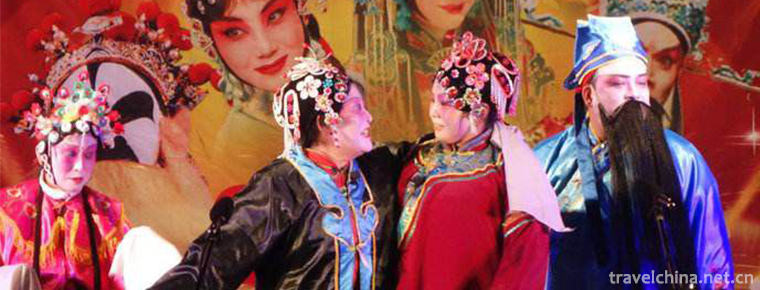
-
The peak of unique beauty Duxiufeng
Duxiufeng is located in Jingjiang King's City in the center of Guilin City, Guangxi. It is an inseparable part of the King's City Scenic Area. Gufeng protruding, steep, magnificent, known as "a p.
Views: 153 Time 2018-12-12 -
Linzhi Basongcuo Scenic Area
Basongtao, also known as Caogao Lake, means "green water" in Tibetan. It is about 18 kilometers long. Its surface area is about 27 square kilometers. .
Views: 158 Time 2018-12-12 -
White Swan Hotel Guangzhou
The White Swan Hotel is located in Baigetan, Shamian, Guangzhou. It was built by Mr. Huo Yingdong and the Guangdong Provincial Government. It opened in 1983 and is the first five-star hotel in China t.
Views: 205 Time 2018-12-16 -
Shenyang Green Island Tourist Resort
Located in Tonggou Township, Sujiatun District, Shenyang City, 15 kilometers away from Shenyang City, Green Island Tourism Resort is a comprehensive multi-functional tourist area .
Views: 434 Time 2019-02-08 -
Chaozhou Music
Chaozhou music is the general name of all kinds of traditional folk instrumental music spread in Chaoshan area of Guangdong Province, referred to as Chaozhou music.
Views: 156 Time 2019-04-16 -
Southern Drama
Nan Opera, also known as Nan Opera and Shi Nan Diao, commonly known as "Gaotai Opera" or "People's Congress Opera", is a local opera in Enshi Tujia and Miao Autonomous Prefecture o.
Views: 267 Time 2019-06-07 -
Ningde Huo Boy Line Lion
Ningde Huo children's lion is a traditional folk culture, which controls the lion's movement and expression through silk thread. Line lion is mainly pulled by head rope, tail rope and parotid rope, so.
Views: 73 Time 2019-06-08 -
Qijia Yanxi
"Qijia Yanxi" is a long narrative poem in Tu folk literature. It records the eleventh generation of Qi Tusi Chief Qi Yanxi in the history of Tu people, despite his old age and physical decli.
Views: 186 Time 2019-06-10 -
Yi Medicine Water Plaster Therapy of Yi Medicine
Yi medicine is the summary and wisdom crystallization of the Yi people's long-term struggle against disease, and it is an important part of the great treasure house of Chinese medicine. There are thou.
Views: 203 Time 2019-07-12 -
Beijing Institute Of Graphic Communication
Beijing Printing College is a full-time general higher education institution established by the Beijing Municipal People's Government and the former General Administration of Press and Publication. Th.
Views: 164 Time 2019-09-22 -
Cultural corridor of Confucianism Buddhism and Taoism
Emei Mountain Confucian, Buddhist and Taoist cultural corridor inherits and develops Chinese traditional culture through different aspects, and excavates its own value and charm from Emei Mountain's historical culture, and highlights its connotation of "China's first mountain"..
Views: 146 Time 2020-10-15

